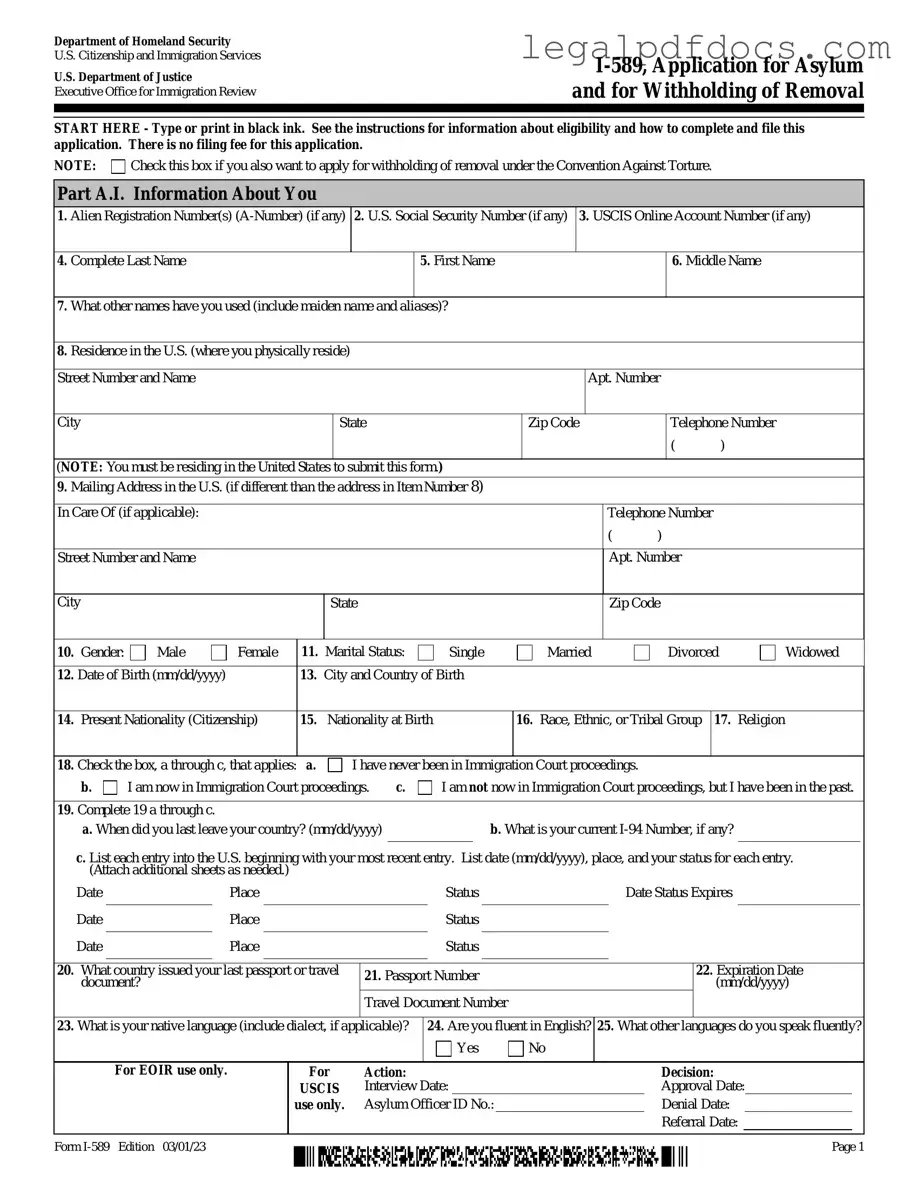Fill Out a Valid USCIS I-589 Template
The USCIS I-589 form is a crucial document used by individuals seeking asylum in the United States. This form allows applicants to present their case for protection based on a well-founded fear of persecution in their home country. Understanding the I-589 form is the first step toward securing safety and stability in a new environment.
Ready to take the next step? Fill out the form by clicking the button below.
Open USCIS I-589 Editor Here
